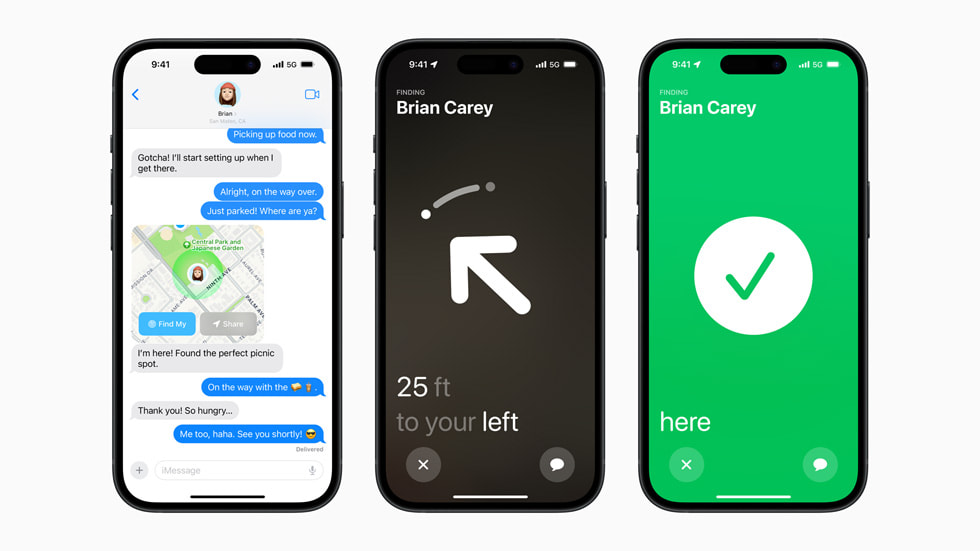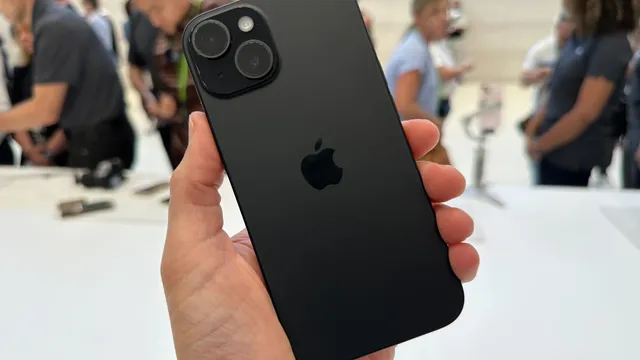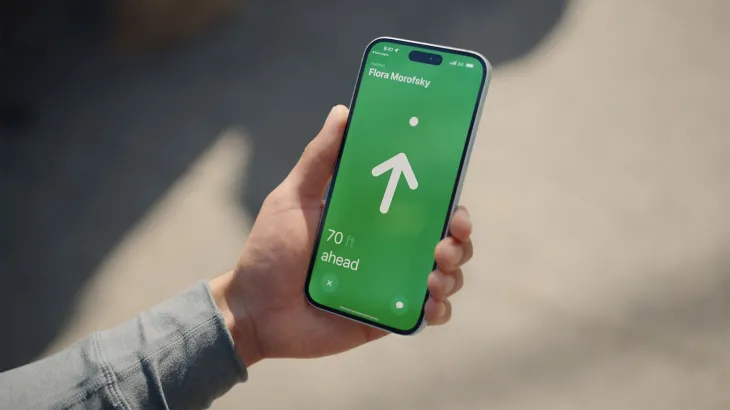Precision Finding is a new feature on the iPhone 15 that uses ultra-wideband technology to allow users to guide themselves to other users who share their location. Although the application is new in terms of Apple’s assistive technology features, and it could be especially useful for people with varying visual, hearing, and cognitive related disabilities.
This new feature uses what is known as an ‘ultra-wideband chip‘ to precisely measure the distance and direction to the other user’s device. The user simply needs to open the ‘Find My’ app and tap on the name of the person they want to find. The information gathered from the app is then used to create an arrow on the user’s map that shows them the way to the user they are trying to locate. Besides the arrow, the user can also see the distance to their target and estimated time of arrival in real time. The overall appearance is user-friendly and intuitive, but with a hefty price tag, starting at $799 or $33.29/mo. for 24 mo. With the average person on disability making barely enough to remain above poverty level, it will price out many disabled users.

Images showing Precision Finding in action
The Functional Solutions Model and Precision Finding
The Functional Solutions Model of Disability is a theoretical framework that views disability as a result of functional limitations. These limitations can be caused by physical, cognitive, or sensory impairments. As the Functional Solutions Model focuses on finding solutions to these perceived limitations through technology or methodology, it is clear that the Precision Finding application falls within this model of disabilities. The feature is designed to help people overcome the functional limitations that are caused by their disability by using technology to provide a solution to the problems that can arise with navigation.
How Precision Finding Can Help People with Disabilities
Precision Finding has the potential to help people with disabilities in a variety of ways. For example:
- People with visual disabilities (people who are blind/low vision): Precision Finding could help people with visual impairments to navigate their surroundings more easily. They could use the feature to find their way to specific locations, such as finding their supervisor/trainer on their first day of work, or to meet up with friends or family in crowded or unfamiliar places.
- People with hearing disabilities (people who are deaf/hard of hearing): This application could help people with hearing impairments to stay connected with friends and family by easily finding where their loved ones are located, or to be guided to them if they become lost. This technology could possibly be used by a person who is hard of hearing or deaf to find their way to a specific location without having to ask for directions.
- People with cognitive disabilities (people with Alzheimers, dementia, autistic people, etc.): This feature could help people with cognitive disabilities to stay better oriented and safe. They could potentially use the feature to find their way home, or to be located by their loved ones if they are lost somewhere or in potential danger.

Image displaying the back of the iPhone 15
Final Thoughts
Precision Finding is a new and innovative feature that has the potential to make a significant difference in the lives of people with disabilities. The feature is designed to help people overcome the functional limitations that may have been brought about by their disability, and it could help people to live more independent and fulfilling lives. Although Precision Finding appears to be a step in the right direction for assistive technology related to navigation, it is important to note that it is still in its early stages of development, and it is not yet clear how widely it will be adopted or how effective it will be for people with disabilities. Additionally, due to the high price tag of the iPhone 15, many people with disabilities will be priced out from exploring this new feature until the cost of the phone drops down. However, the potential benefits of this technology appear significant, and it is worth exploring further once the feature is available on the iPhone 15.
